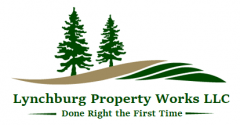First and foremost, having a drainage problem around your home can be a miserable and helpless feeling.
Title: Troubleshooting Drainage Woes: Addressing Common Problems Around Your Home’s Yard
Introduction
Proper drainage is crucial for maintaining the integrity and aesthetics of your home’s yard. However, drainage issues are common and can lead to a host of problems, including erosion, water pooling, and even structural damage to your property. Identifying and addressing these problems promptly can save you time, money, and headaches down the line. In this article, we’ll explore some of the most prevalent drainage problems homeowners face and discuss effective solutions to mitigate them.
- Water Pooling
Water pooling is a telltale sign of poor drainage and occurs when water collects in certain areas of your yard, forming puddles that can drown plants, create soggy patches of soil, and attract pests like mosquitoes. Common causes of water pooling include:
- Improper Sloping: If your yard lacks proper grading or has areas that slope toward your home rather than away from it, water will naturally accumulate in low-lying spots.
- Compacted Soil: Compacted soil, often a result of heavy foot traffic or construction work, prevents water from infiltrating the ground and encourages surface runoff.
Solution: To address water pooling, consider regrading your yard to ensure that water drains away from your home’s foundation. Additionally, aerating compacted soil can improve its ability to absorb water, reducing surface runoff and preventing pooling.
- Erosion
Erosion occurs when water washes away soil, leaving behind unsightly gullies and undermining the stability of your landscaping features, such as flower beds and retaining walls. Common causes of erosion include:
- Heavy Rainfall: Intense or prolonged rainfall can erode soil quickly, especially if your yard lacks adequate ground cover or erosion control measures.
- Poorly Positioned Downspouts: Downspouts that discharge water too close to your home’s foundation can contribute to erosion by directing a concentrated flow of water onto vulnerable areas of your yard.
Solution: To combat erosion, consider installing erosion control measures such as retaining walls, terracing, or strategically placed mulch or ground cover plants. Additionally, extending downspouts to discharge water further away from your home can help prevent erosion near the foundation.
- Soggy Lawn
A soggy lawn is not only unsightly but can also suffocate grass roots, promote fungal growth, and create ideal breeding grounds for pests. Common causes of a soggy lawn include:
- Poor Drainage: If your yard lacks proper drainage infrastructure such as French drains or catch basins, water may become trapped on the surface, saturating the soil and creating a soggy environment.
- Overwatering: Excessive irrigation or watering during periods of heavy rainfall can contribute to a soggy lawn by saturating the soil beyond its capacity to absorb water.
Solution: Improve drainage in your yard by installing French drains or catch basins to redirect excess water away from the surface. Additionally, adjust your irrigation schedule to avoid overwatering and promote healthy soil moisture levels.
- Foundation Issues
Poor drainage can have serious consequences for your home’s foundation, including cracking, shifting, and settling. Common causes of foundation problems related to drainage include:
- Hydrostatic Pressure: Excessive water buildup around your home’s foundation can exert hydrostatic pressure, causing cracks and structural damage over time.
- Poor Soil Compaction: Soil that becomes saturated with water due to inadequate drainage may expand and contract, leading to foundation movement and instability.
Solution: Ensure proper drainage around your home’s foundation by installing gutters and downspouts to channel water away from the base of the structure. Additionally, consider grading the soil around your foundation to encourage water runoff and prevent pooling.
Conclusion
Addressing drainage problems around your home’s yard is essential for preserving its structural integrity, maintaining landscaping aesthetics, and preventing costly repairs down the line. By identifying the underlying causes of drainage issues and implementing effective solutions, you can protect your property from water-related damage and enjoy a healthier, more resilient outdoor environment for years to come.
